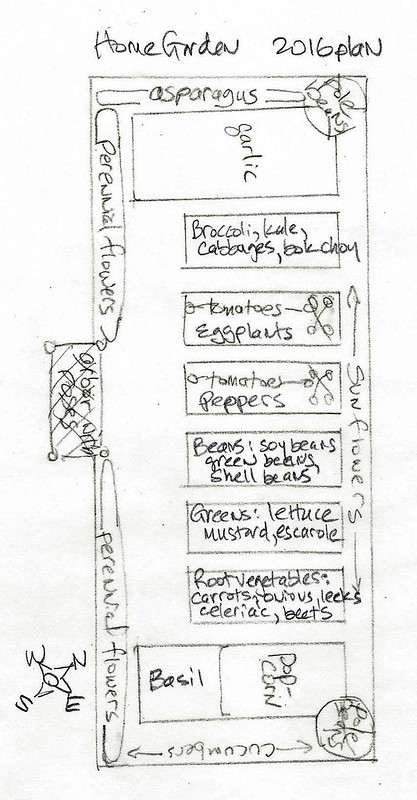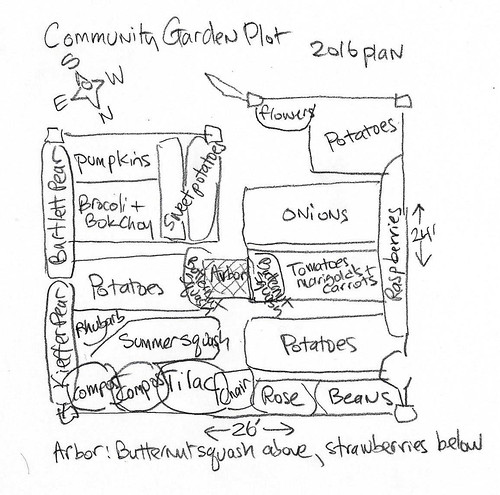

I've finished up my garden plans. Just in time to start preparing the beds for planting.
ROTATION: To make new garden plans, I rotate my root crops (especially onions, garlic and carrots), as well as my tomatoes and potatoes. I try for a 3 year rotation. I don’t worry about rotating things like squash, greens, beets, cabbage, corn, beans, basil etc, though they usually end up in a different bed because of rotating the roots and solanacea. It’s recommended to follow a rotation of heavy feeder, light feeder, legume (soil builder). I try to do this, but in a small garden growing lots of different varieties, including many heavy feeders, it gets hard to do move things around properly. But that's the idea I shoot for. I like to keep similar plants together. They're generally good neighbors. They need the same soil amendments and fertilizer. For the brassicas, they all need to be covered against cabbage worms. In most beds, I add in scattered flowers: dill, marigolds, nasturtiums, sunflowers, hyssop, etc. to attract beneficial and pollinators.
Next step: COMPOST. I like to add 1 to 2 inches of compost, but only to beds that will have heavy feeders. I don’t usually add compost to light feeders (garlic, leeks, onion, shallot, carrots, parsnip, carrot, potato, turnip) if I composted that bed well the year before. I also don't compost legume beds. This year, I'll add compost to my onion and potato beds. I think they need it. Also it's funny, some people consider onions and potatoes heavy feeders and others list them as light. The heavy feeders will need more than just compost. I'll also fertilize as they begin their growth. Especially tomatoes, corn, and cabbage family. I use Garden Tone or a fish emulsion. But not too much. I wait til the leaves show a little green, then I fertilize. Too much fertilizer gives bushy plants with less fruit.








